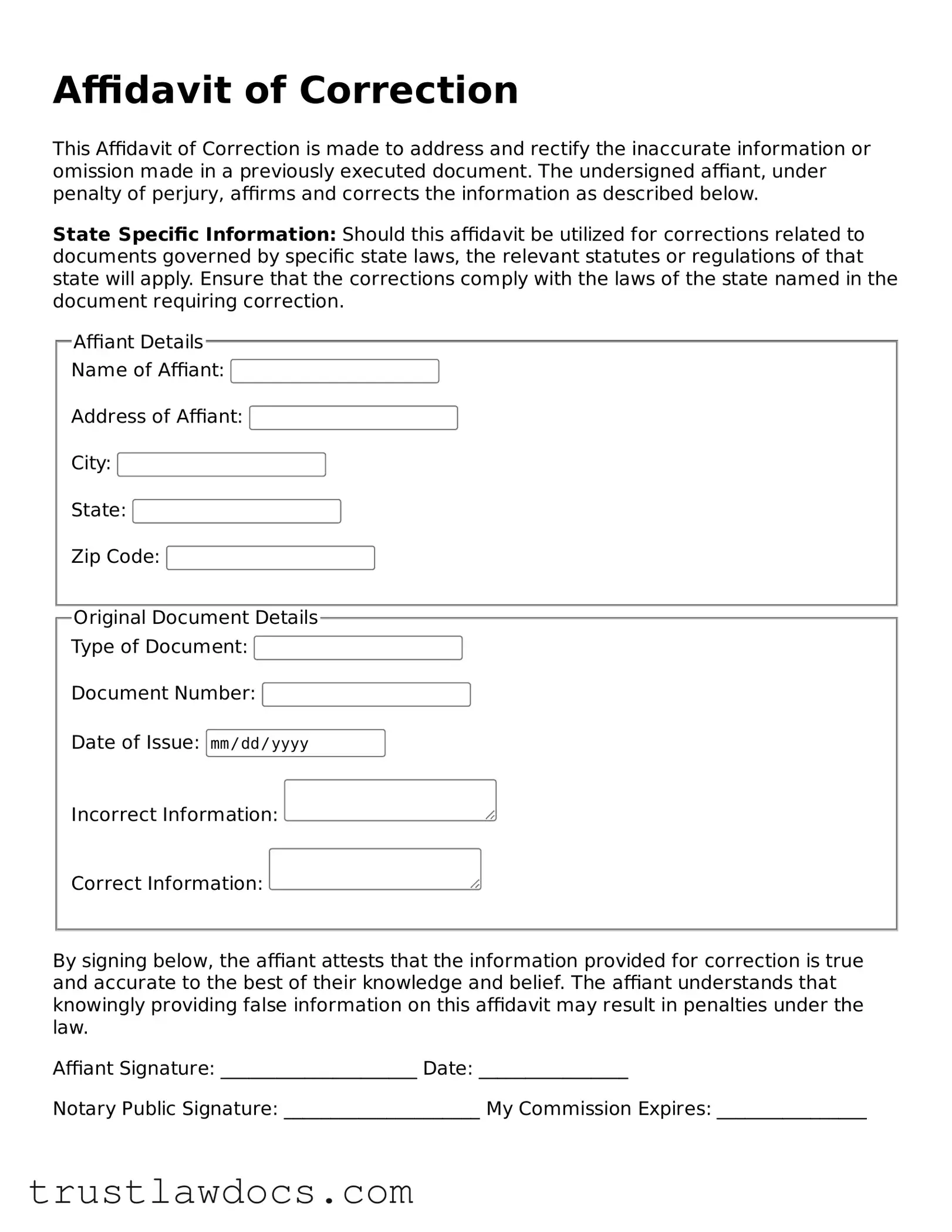What is an Affidavit of Correction?
An Affidavit of Correction is a legal document used to correct errors or inaccuracies found in official records. These corrections could relate to misspelled names, incorrect property descriptions, or mistakes in dates, among other details. It must be signed by the person requesting the change in the presence of a notary public to verify its authenticity.
When do I need to use an Affidavit of Correction?
This document is necessary when an error on a legal document needs to be officially corrected. Common situations include errors on titles for vehicles or property, birth certificates, and marriage licenses. It ensures that records are accurate, which is essential for legal, financial, and personal reasons.
Who can file an Affidavit of Correction?
The person who is directly affected by the mistake or their legal representative can file an Affidavit of Correction. This typically means the individual whose name or information appears erroneously on the official document.
How do I file an Affidavit of Correction?
Filing an Affidavit of Correction involves drafting the document, including the incorrect information alongside the corrected details, and then signing it in the presence of a notary public. The next step is to submit the notarized affidavit to the appropriate government or agency office where the original record is held.
Is there a fee to file an Affidavit of Correction?
Yes, fees may be required, but they vary depending on the jurisdiction and the type of document being corrected. It is advisable to check with the specific agency or government office for the exact amount.
What happens after an Affidavit of Correction is filed?
Once an Affidavit of Correction is submitted, the responsible agency or office will review the affidavit and make the necessary updates to the official record. The process time can vary widely depending on the specific requirements and workload of the office handling the correction.
Can an Affidavit of Correction be denied?
Yes, if the affidavit lacks sufficient evidence to support the correction, is not notarized properly, or if the requested change involves altering substantive details that would affect legal ownership or rights, it can be denied. In such cases, further legal action or documentation may be required to achieve the desired correction.
